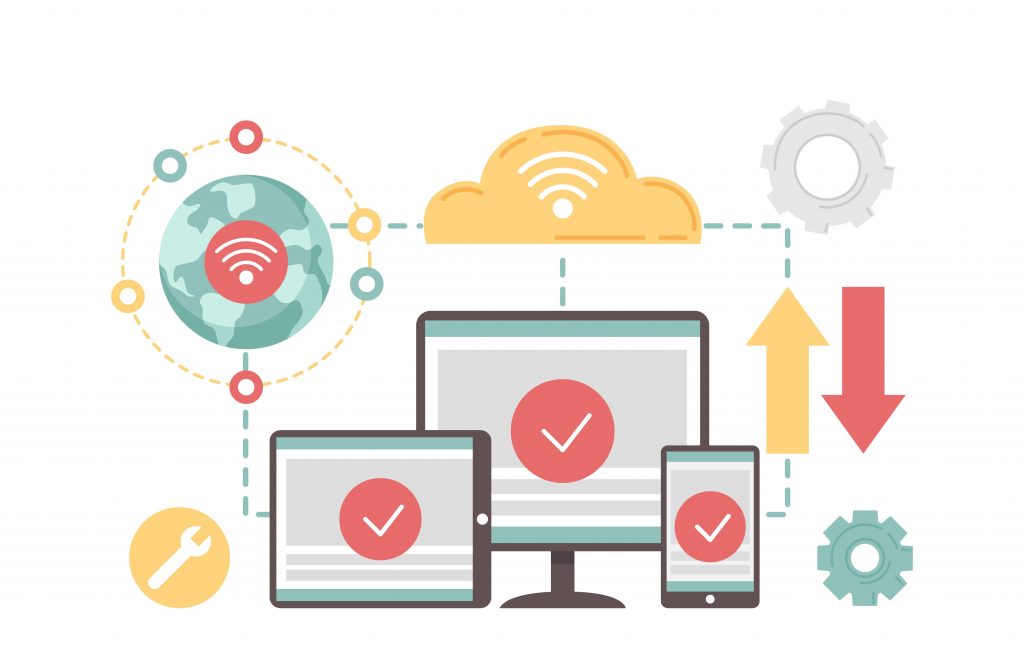SaaS, which stands for ‘Software as a Service’, is a revolutionary software delivery paradigm that has transformed the way we access and use IT applications. In this framework, applications are stored in the cloud and distributed to users via the Internet, eliminating the need for on-site installations. The definition emphasizes that software is now available as a service, allowing users to access software functionality through a web browser without traditional installation constraints. This approach has significantly transformed the way businesses access applications, providing numerous benefits. Therefore, What is SaaS and How Does it Work?

How does SaaS work?
The concept of Software as a Service (SaaS) involves transitioning from locally installed software applications to hosting them on remote servers in the cloud. This allows users to access the applications via a web browser and an Internet connection, eliminating the need for traditional installations on personal devices. Essentially, SaaS provides software as a service, on demand.
The benefits of SaaS are plentiful. By outsourcing application management to remote service providers, companies can significantly reduce their infrastructure costs. Additionally, SaaS providers manage software updates automatically, eliminating the need for tedious manual downloads and installations. Users also enjoy increased accessibility to applications from anywhere, promoting the flexibility and mobility necessary in today’s context of remote work and international collaboration.
What does SaaS mean in terms of benefits?
One of the primary benefits of utilizing software as a service (SaaS) is the substantial cost savings it provides to companies in terms of infrastructure. By adopting SaaS, companies no longer need to invest heavily in expensive servers, data centers, and maintenance teams. This resulted in significant reductions in overall infrastructure costs. This cost-effective option enables companies to allocate resources more efficiently and focus on their core business, ultimately leading to improved profitability and growth.
SaaS providers manage software updates, ensuring users always have access to the latest functionality and security enhancements. This eliminates the need for manual software updates, saving time and effort. By automating updates, SaaS providers ensure that their customers benefit from the latest advances and protect their systems against vulnerabilities. This feature enhances the user experience, allowing individuals and businesses to focus on their core tasks without worrying about outdated software.

SaaS enables individuals to access applications from any location, promoting remote work and global collaboration. This flexibility increases productivity and fosters cooperation.
The SaaS model allows companies to easily adjust their operations as their needs change, effortlessly increasing or decreasing the number of licenses they use. This flexibility allows companies to adjust to growth or downsizing without complications or disruption.
What is SaaS and how does it work: usage scenarios for SaaS solutions
The Software as a Service (SaaS) model offers companies of all sizes a wide range of possibilities. In these contexts, SaaS offers flexibility and convenience by eliminating the need for infrastructure management. Common use cases for SaaS solutions include improving collaboration and productivity with applications such as Microsoft 365. And streamlining customer relationship management with platforms such as Salesforce. Also, simplifying financial management with online accounting software. As well as facilitating transparent project planning and management. Performing data analysis for informed decision-making. At last, automating human resources management too, and creating online stores with e-commerce solutions. These examples illustrate how SaaS simplifies access to critical tools and improves overall business productivity.
Conclusion
In conclusion, Software as a Service (SaaS) is more than just a software distribution model. It embodies the principles of simplification, accessibility, and flexibility. Also, offering businesses a revolutionary approach to accessing mission-critical applications without the cumbersome task of managing infrastructure. The advantages of SaaS, such as decreased infrastructure costs, automated updates, improved mobility, and easy scalability, are transforming operational dynamics. In today’s rapidly changing business environment, scalability is also crucial.
To fully leverage the benefits of Software as a Service (SaaS) and successfully navigate your digital transformation journey, it is essential to partner with a trusted and dependable provider. This is where To fully exploit the benefits of Software as a Service (SaaS). To effectively navigate your digital transformation journey, it’s imperative to work with a trusted and reliable partner. This is precisely where Altcode Solutions excels. We offer a wide range of services and are dedicated to an agile, customer-centric approach. Our goal is to facilitate a successful digital transformation and promote sustainable growth.
For more information, contact us




